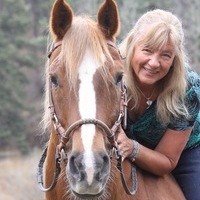
The Most Popular Horse Breeds Of 2019
Equestrian Advice & Guides General Equestrian
Build your business profile for FREE and expose your services to thousands of potential clients!
Create my profile now!
People ask what they can do with their horses in winter; especially those who live in snowy, icy, cold regions who now find quick trips to the barn and little riding is the norm. If we can’t ride, or if we can only ride for short times in an arena, what can we do to maintain our relationship with our horses?
There are so many things to teach a horse in his lifetime that we find we may not have time to get everything done we’d like. The answer for some is to send to a trainer over winter, or to just drop all training until spring. But there are a ton of fun things to do, and yes, even in sub-freezing weather!
Maybe you’ve always wished your horse knew how to ground-tie, but never had the time to spend teaching him to do so. Or perhaps you want him to know some tricks—bowing, playing fetch, etc. Your horse may not stand as quietly at the mounting block as you’d like or backs up like a drunken sailor and you’d like him to do a nice L or figure-8 in reverse. No time like winter to teach him the things you wish he knew already or things you want him to do better once riding season arrives.
Some easy and fun lesson ideas:
I find that keeping the lessons short in duration works best all year-round, and in winter especially, so usually, our sessions are five to twenty minutes long. It’s the repetition that is most important and the daily interaction helps keep the horses interested in what weird thing I’m going to do with them next.
I’m currently training my new mare, Paizely, to step into her blanket without me having to unbuckle the front each time. All my horses learn this and it makes my life easier for them doing so. This lesson is NOT FOR BEGINNERS and I make no recommendations for others to teach this or practice this methodology. There are buckles on the front closures for a reason!
*If you decide to teach your own horse, remember to keep yourself and your horse safe at all times. Break each lesson down into smaller pieces than you think are needed. Halter your horse and have him tied or better, have an assistant to hold him, and use a velcro front closure until the horse understands what you want. Begin with something small, like a wash cloth or part of a towel and get bigger over time. Teach him to not worry about his eyes being covered.
Get your FREE excerpt from my own personal training diary here and see how I am currently working with my horse, Paizely. https://lp.constantcontactpages.com/su/Bnj8Hm0/blanket
So have fun with your horse, Happily Ever After!
~Tanya Buck
www.HorsesHappilyEverAfter.com
***This piece is not written to offer any legal, medical, or professional advice and should not be construed as specific training advisory recommendation to you or anyone else. Please obtain professional instruction from a qualified person concerning your own objectives and needs.

